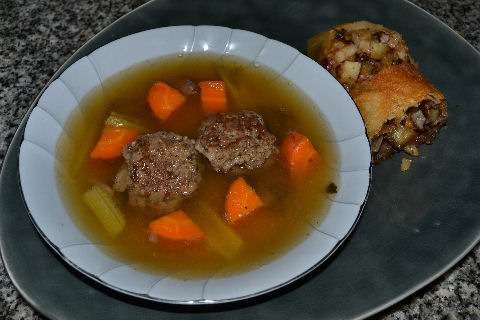
 You thought I’d either forgotten about or abandoned this project. But no, I’ve just been really busy with other stuff, and, probably more, the hotter summer months just didn’t feel like they lent themselves well to steaming bowls of hot soup and stuffed breads just out of the oven. But, let’s get back on track, I mean, there are still around 200 to go!
You thought I’d either forgotten about or abandoned this project. But no, I’ve just been really busy with other stuff, and, probably more, the hotter summer months just didn’t feel like they lent themselves well to steaming bowls of hot soup and stuffed breads just out of the oven. But, let’s get back on track, I mean, there are still around 200 to go!
So what do we have here…? We’re off to Austria with some Leberknödelsuppe and a Strudel. It was an offal kinda dinner.
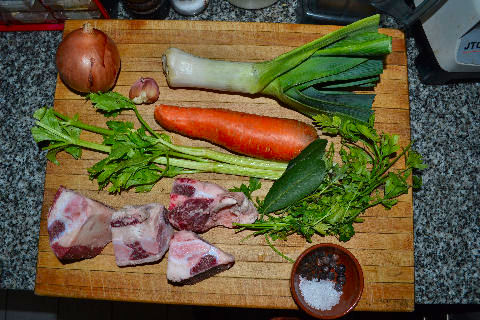
Let’s start with the soup base – a traditional Austrian beef broth known as rindesuppe. We’ve got beef bones, onion, garlic, celery (usually celery root is also used, but it’s near impossible to find here, and wouldn’t be in season yet anyway), carrot, leek, parsley, peppercorns, juniper berries, bay leaves, and salt.
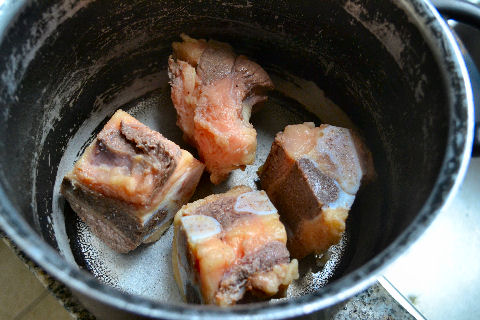
Interestingly, in most of the recipes I found, the idea is a very light, clear broth, so the bones aren’t browned. Instead, they’re blanched in boiling water for about two minutes to get some of the “scum” off of them, then rinsed, and returned to the pot.
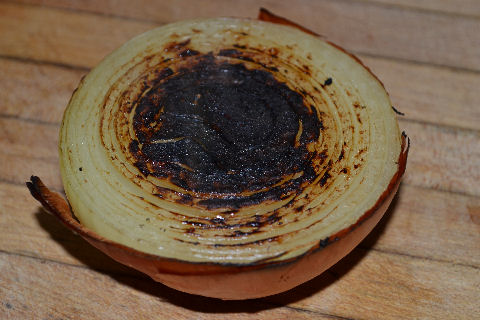
The bones are covered with cold water and brought up to just a bare simmer, for about an hour. Then, the rest of the vegetables are added, just coarsely chopped, with one exception. The onion is cut open and the cut surface is charred – an unusual step – since usually you either sort of brown all the vegetables and meat for a darker stock, or not any of them for a lighter. The idea here, apparently, is just to give a hint of that caramelization flavor and color.
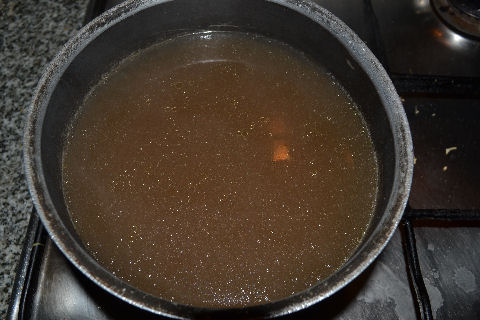
Another hour at a bare simmer, and then strained the broth through a clean cloth/fine sieve. Note the color. I’m often asked why chefs talk about clarifying broths – again, note the color, note the sort of cloudiness. I stuck this pot back halfway onto a burner over high heat, whisked in a couple of beaten eggs, and brought it to a low boil (having the pot halfway off the burner means that one side gets to a rolling boil, while the other side stays… “calm”.
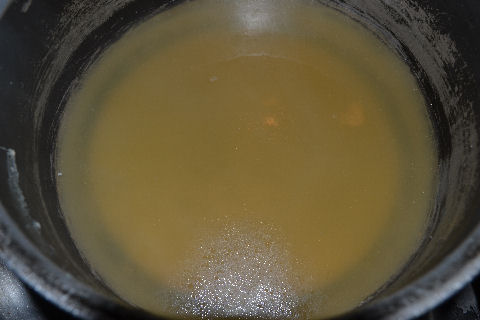
About fifteen minutes of that, and letting the eggs suck up all the impurities and particulate matter in the stock (don’t ask me why it works, I’m sure someone out there has written a really great explanation), it’s strained through a cloth again, and… note the color and clean-ness of the stock. The flavor stays just as rich. Set this aside, keep it warm (or chill it overnight, and you can remove some of the remaining excess fat, if you like).
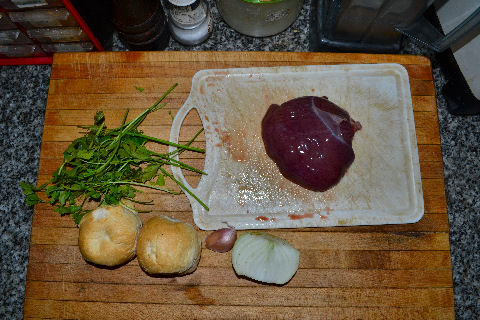
There are numerous things done with rindesuppe – the addition of vegetables, or meat, thin strips of crepes, and various types of dumplings. I decided to just go with one of the, for me, more unusual ones, the leberknödel, or, liver dumplings. Pork liver (depending on what part of Austria, either pork or beef liver is used), onion, garlic, parsley, marjoram, and some day-old bread rolls.
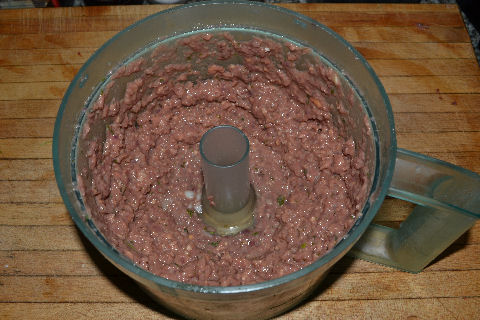
Clean the liver of any tougher tissues like large veins or connective ligaments. Soak the bread rolls in some milk for a few minutes to soften them, then squeeze out the excess milk. Put the liver, and the rest of the ingredients (other than the leftover milk) into the food processor with a little salt and pepper and pulse until you have a coarse puree that’s thick enough to mold into dumplings, or really, meatballs, that are roughly somewhere between a whole walnut and a golf ball in size.
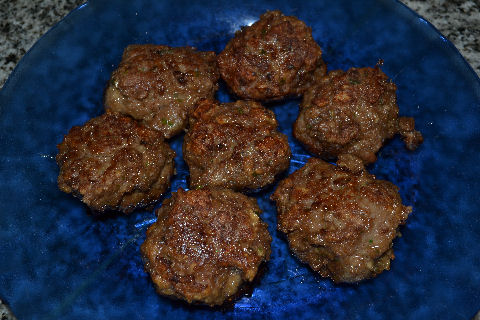
Brown them in butter and then set aside. When you’re almost ready to serve, you’ll heat up the stock with these and any vegetables you want, in the broth (I cut up a couple of the pieces of carrot and celery that had been used to make the stock, and added them back in).
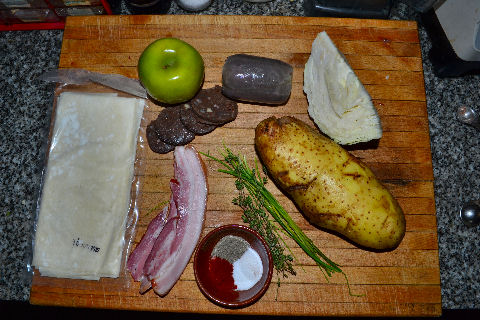
Let’s jump to our strudel. Oh, the possibilities. In the end, I just sort of went with a composite – bacon, cabbage, potato, apple, and morcilla sausage (blood sausage), parsley, thyme, salt, pepper, and hot paprika.
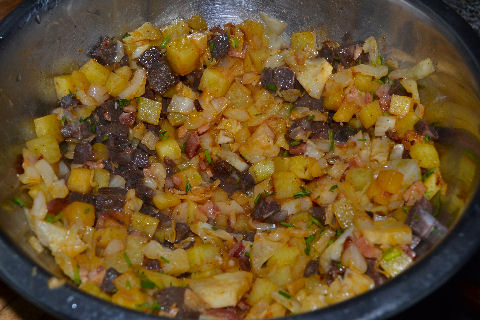
Sautéed the ingredients that needed it together – bacon and cabbage started off first, then added the peeled and diced potato, cooked that for a little while, added the diced apple. When the potatoes were soft, I took the mixture off the heat, added in the diced morcilla (it’s already cooked, so it’s going to heat up in the oven) sans it’s casing, and the chopped herbs and spices. Left to cool – you can’t really roll it up in strudel dough until it’s down to at least room temperature.
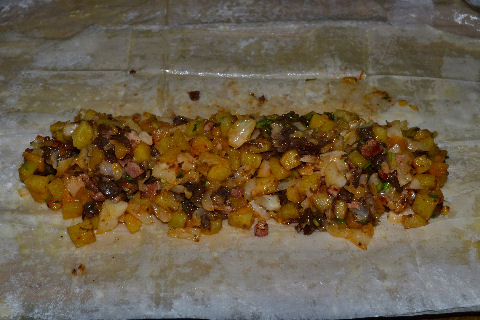
Brushed a couple of layers of strudel dough with melted butter, placed the filling on it towards one edge, and then rolled it up like a giant burrito.
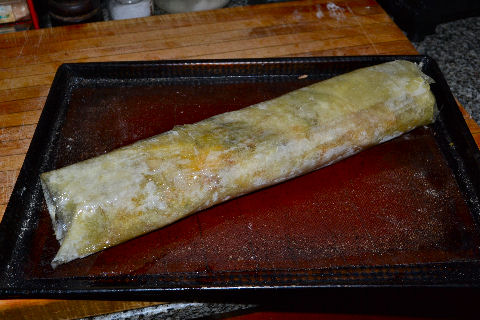
Brushed the outer surface with more melted butter and popped it in a hot oven for about half an hour.
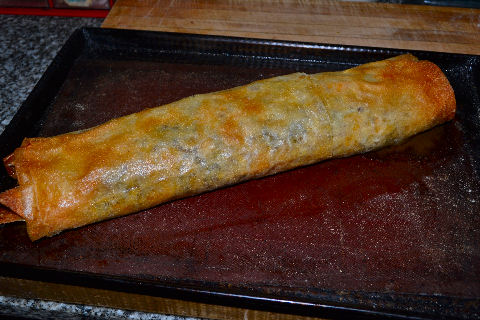
And, we’re golden. Brown, that is.
To serve, as I said, heated up the stock with the liver dumplings in it, along with some of the cut up vegetables from the stock making. Served it up with a couple of slices of the strudel. Delicious, though very subtle in flavor, more or less classically what you might expect from the cuisine. I liked it, though I can’t say it was one of my favorites so far, but it’s hard to say if that’s simply because I’ve gotten so used to eating spicier food over the last years….
Next round, Azerbaijan.
[…] Next round, Austria. […]